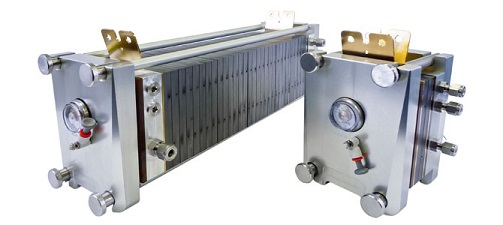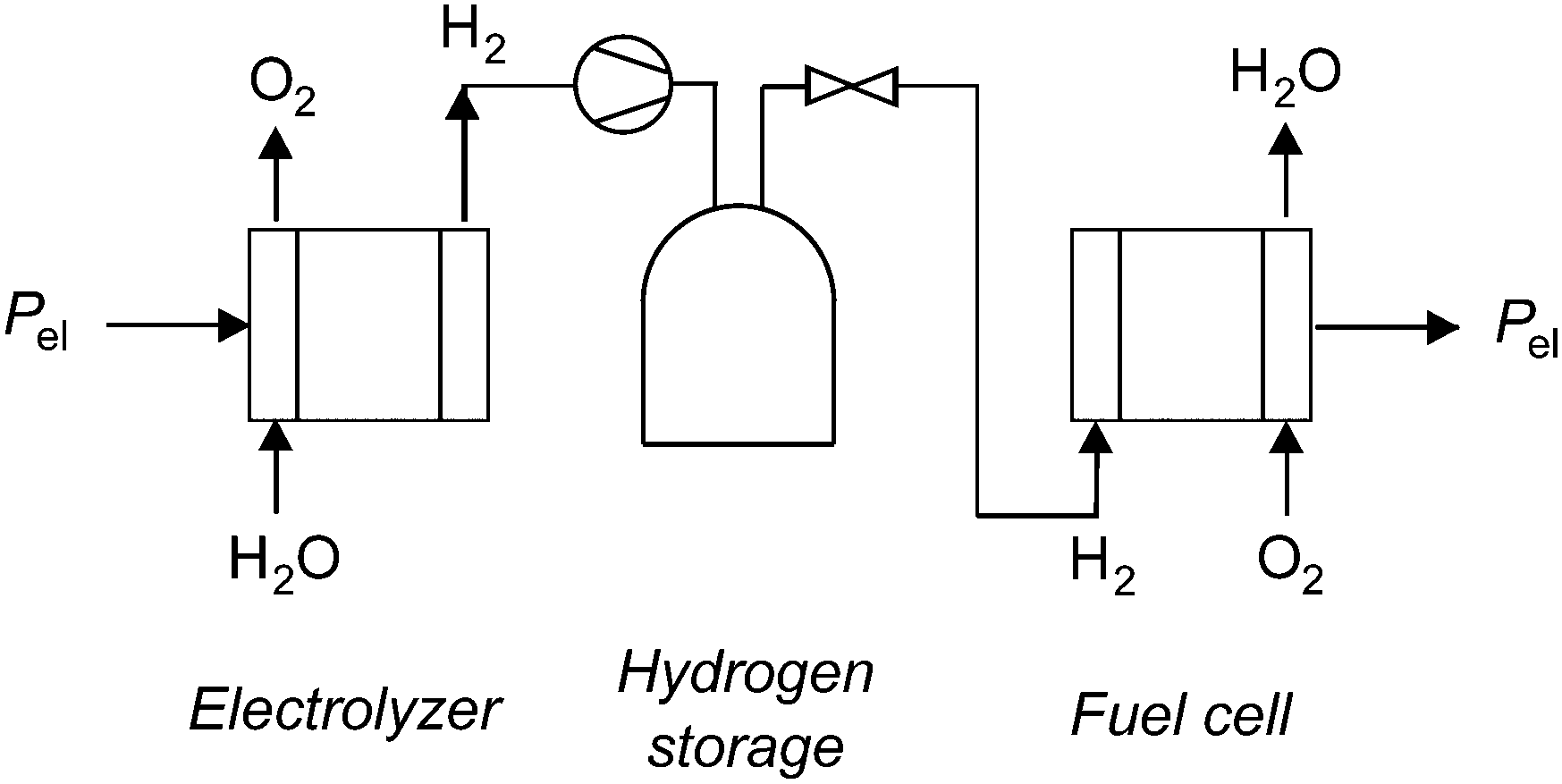Fuel cells are different from most batteries in requiring a continuous source of fuel and oxygen usually from air to sustain the chemical reaction whereas in a battery the chemical energy usually comes.
Hydrogen fuel cell dimensions.
This assembly of cells is called a fuel cell stack or just a stack.
Most fuel cell developers use a nominal voltage of 0 6 to 0 7 v at nominal power.
A fuel cell is an electrochemical cell that converts the chemical energy of a fuel often hydrogen and an oxidizing agent often oxygen into electricity through a pair of redox reactions.
Fuel cell systems can be designed at nominal voltages of 0 8 v per cell or higher if the correct design materials operating conditions balance of plant and electronics are selected.
It can deliver dc power or can be combined with an inverter or ups for ac power.
A single fuel cell consists of a membrane electrode assembly mea and two flow field plates delivering about 0 5 and 1v voltage too low for most applications.
Just like batteries individual cells are stacked to achieve a higher voltage and power.
Extended range the hydrogen fuel cell can extend the range of a battery electric bus by up to 300 miles on a single refueling and requires no off board electric.
A typical fuel cell works by passing hydrogen through the anode of a fuel cell and oxygen through the cathode.
Typical polarization curve for a pem fuel cell stack.
Fuel cells do not need to be periodically recharged like batteries but instead continue to produce electricity as long as a fuel source is provided.
It uses hydrogen stored on site or via pipeline to feed to the fuel cell architecture and its management system handles control monitoring and safety functions.










